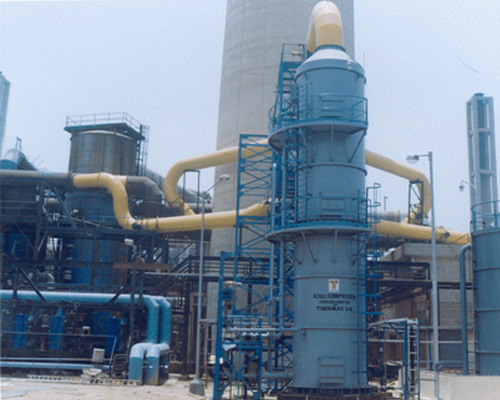Introduction
Flue Gas Desulfurization (FGD) is a vital pollution control process implemented across a wide range of industrial operations, especially in power generation and heavy manufacturing sectors. With the rising global demand for energy, particularly from coal and oil-fired plants, the emission of harmful pollutants like sulfur dioxide (SO₂) has become a major environmental concern. SO₂ is a significant contributor to acid rain, airborne particulate matter, and respiratory health issues, making its mitigation a critical objective in sustainable industrial practices. FGD systems are engineered to remove sulfur dioxide from the flue gases emitted during the combustion of sulfur-containing fuels. These systems are not only a response to strict environmental regulations and air quality standards enforced by international and national authorities but also a proactive step toward greener and more responsible industrial operations.
Why Flue Gas Desulfurization is Important
Environmental Protection
- SO₂ reacts with water vapor in the atmosphere to form sulfuric acid, leading to acid rain.
- Acid rain affects aquatic life, damages crops, corrodes buildings, and deteriorates soil quality.
Public Health
- SO₂ is a primary irritant to the human respiratory system.
- Exposure can lead to asthma, bronchitis, and other cardiopulmonary diseases.
Regulatory Compliance
- Governments around the world have enacted strict emission standards (e.g., the U.S. Clean Air Act, European Union Directives, India’s CPCB norms).
- FGD systems are necessary for power and process industries to legally operate under these rules.
Types of Flue Gas Desulfurization Systems
FGD technologies are generally categorized based on:
- State of the absorbent: wet, dry, or semi-dry.
- Chemical reaction types involved.
Wet FGD Systems
Overview:
- Most widely used method globally.
- Uses a liquid absorbent, typically a limestone or lime slurry, to remove SO₂.
Working Principle:
- The flue gas passes through a spray tower or scrubber where it contacts the slurry.
- A chemical reaction takes place, converting SO₂ into a solid compound.
Chemical Reactions:
- SO₂ absorption: SO2+H2O→H2SO3(sulfurousacid)SO₂ + H₂O → H₂SO₃ (sulfurous acid)SO2+H2O→H2SO3(sulfurousacid)
- Reaction with limestone: CaCO3+H2SO3→CaSO3+CO2+H2OCaCO₃ + H₂SO₃ → CaSO₃ + CO₂ + H₂OCaCO3+H2SO3→CaSO3+CO2+H2O
- Optional oxidation to gypsum: CaSO3+½O2+2H2O→CaSO4⋅2H2O(gypsum)CaSO₃ + ½O₂ + 2H₂O → CaSO₄·2H₂O (gypsum)CaSO3+½O2+2H2O→CaSO4⋅2H2O(gypsum)
Advantages:
- High SO₂ removal efficiency (up to 98%).
- Can handle large gas volumes.
- Produces usable gypsum by-product.
Disadvantages:
- High initial cost.
- Requires water and wastewater treatment.
- Corrosion and scaling in system components.
Popular Technology:
- Wet limestone/gypsum process (used in over 90% of U.S. coal power plants with FGD).
Dry Flue Gas Desulfurization Systems
Overview:
- Uses dry sorbents like hydrated lime injected into the flue gas stream.
- No liquid phase involved.
Types:
- Sorbent injection (direct lime injection into flue gas).
- Circulating Dry Scrubber (CDS).
Chemical Reaction: Ca(OH)2+SO2→CaSO3+H2OCa(OH)₂ + SO₂ → CaSO₃ + H₂OCa(OH)2+SO2→CaSO3+H2O
Advantages:
- Lower capital cost.
- Simpler system design.
- No water usage.
Disadvantages:
- Lower SO₂ removal efficiency (70–90%).
- Higher operating cost due to sorbent usage.
- Disposal of dry waste is needed.
Best Suited For:
- Smaller plants, retrofits, and areas with water scarcity.
Semi-Dry FGD Systems (Spray Dryer Absorber – SDA)
Overview:
- A hybrid method that uses a fine mist of lime slurry sprayed into hot flue gas.
- Water in the slurry evaporates, leaving dry residues which are collected by bag filters.
Reaction Mechanism:
- Similar to dry FGD but with improved contact due to slurry spray.
Advantages:
- Moderate water use.
- Compact system.
- Lower corrosion issues than wet FGD.
Efficiency: 80–90% SO₂ removal.
Conclusion
Flue Gas Desulfurization stands as a cornerstone technology in the global effort to curb air pollution and foster sustainable industrial development. As industries continue to rely on combustion processes for energy and manufacturing, the responsibility to minimize their environmental footprint becomes paramount. FGD systems provide a proven, efficient, and adaptable solution for reducing sulfur dioxide emissions, ensuring compliance with environmental regulations, and safeguarding public health. Whether through wet scrubbers that convert SO₂ into usable gypsum, or dry injection systems suited for smaller facilities, the versatility of FGD technologies enables their deployment across a wide range of sectors. Additionally, as global environmental standards grow stricter and awareness about climate change deepens, the importance of robust and efficient desulfurization systems will only continue to rise.

